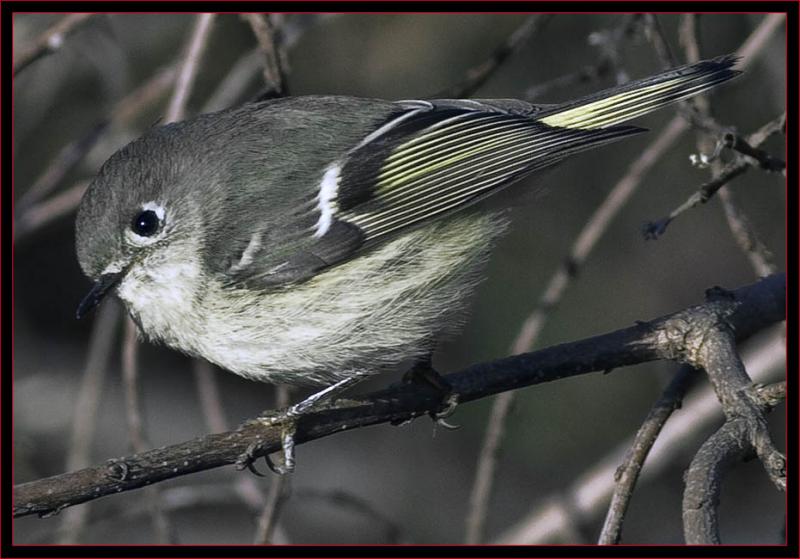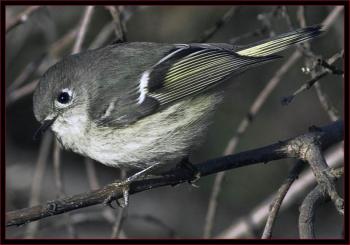Rockin’ the ruby crown
This past week, as we were having breakfast at the kitchen table, we noticed some “flitting and sitting” in the lilac tree just outside the window. We turned and saw a ruby-crowned kinglet that seemed rather captivated by the activity inside the house (two humans, each with a bowl of cereal and a cup of tea — fascinating.)
Actually, there’s no way to know if the bird was peering at us or something else, perhaps its own reflection in the glass.
Regardless, it was an interesting twist, because for the few days leading up to this, we had been watching a ruby-crowned kinglet busying about in our yard, darting for insects and giving its distinctive song — a long, twittering jumble that starts soft and ends with a loud crescendo.
It’s the kind of song that makes you pause when cleaning up the gardens.
The uninitiated may, when looking at a ruby-crowned kinglet, dismiss it as a warbler. Interestingly, it’s more active, zipping about among branches and bushes, flicking its wings nearly nonstop. In fact, the wing-flicking is a more reliable identification clue than the ruby crown, which is seen in males only when the bird is agitated or alarmed.
The flash of the crown is quite a sight to see, appearing like a brilliant little red flame contrasting with the drab green of the bird’s overall plumage. Amazingly, ruby-crowned kinglets are also smaller than warblers, and appear large-headed. Look also for the white wing bar and yellowish edges to the wing feathers and tail. The white eye-ring gives the impression that they’re observing you, or at least that they know you’re observing them!
Ruby-crowned kinglets breed across the northern portions of the U.S. (and in the mountains out west) and throughout the boreal forests of Canada. Although they breed in northern and eastern parts of Maine, they’re more likely to be seen during spring and fall migration, when they are a common migrant throughout the state as they travel to and from their wintering areas in the southeastern U.S.
In spring, males begin the return to the breeding ground ahead of females. Now is a good time to listen for their rambling songs.
Because ruby-crowned kinglets are so tiny (according to studies of their metabolism, they use just 10 calories per day), they are able to feed where larger birds cannot, such as at the far tips of conifer branches, where they snatch seeds, insects and insect eggs. You might also observe them hovering over twigs as they hunt for caterpillars, aphids, spiders and the like.
Females tend to build their nest site high up in trees, even as high as 100 feet. It’s typically made close to the trunk, hidden and protected by foliage. They use grass, webs, feathers, moss and lichen, with a feather-lined cup at the top. A female typically lays six to nine speckled cream-colored eggs. Because the nests are hard to find and access (and breeding is largely in remote areas), not much is known about behaviors associated with nesting.
Fortunately, this time of year, ruby-crowned kinglets are not so difficult to see. In fact, if you’re fortunate, you may see one just outside your window — maybe even peering in.
Event Date
Address
United States
























